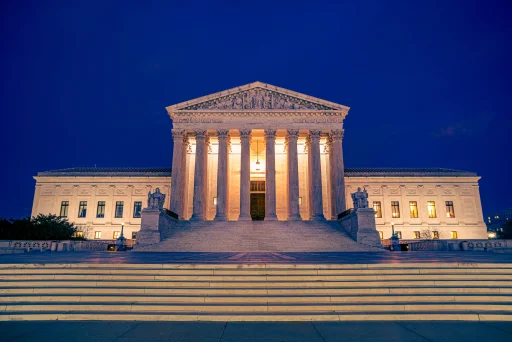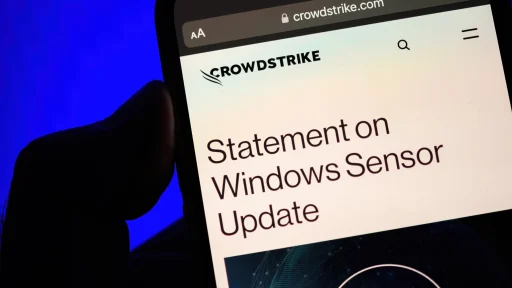Yesterday, The Supreme Court of the United States, in a rare unanimous decision by the court, issued a ruling in Muldrow v. City of St. Louis holding that Title VII of the Civil Rights Act bars employers from discriminating in decisions like lateral transfers, without requiring employees to show that the discriminatory decision caused “significant” disadvantage.
“The opinion holds that a Title VII plaintiff need not demonstrate that an employer’s discriminatory action caused a “significant” disadvantage within the workplace. Rather, to prevail under Title VII, a plaintiff merely must demonstrate they suffered “some harm” as regards a term or condition of their employment.” This pivotal shift means that the legal threshold for what constitutes harm is now lower, significantly easing the process for employees to claim discrimination.
Kavanaugh mostly agreed with the court’s decision but disagreed with the “some harm” requirement, stating, “The discrimination is harm.” He underscored that any discriminatory act, regardless of its direct impact on salary or job title, harms the employee and merits consideration under the law.
Kavanaugh went on to say that, even with a “some harm” requirement, “anyone who has been transferred because of race, color, religion, sex, or national origin should easily be able to show some additional harm—whether in money, time, satisfaction, schedule, convenience, commuting costs or time, prestige, status, career prospects, interest level, perks, professional relationships, networking opportunities, effects on family obligations, or the like.”
The implications of this ruling are far-reaching, suggesting that employees experiencing less overt and more subtle changes in their employment conditions due to discriminatory reasons now have valid grounds to challenge such actions under Title VII. This potentially paves the way for a significant increase in claims being recognized as valid under anti-discrimination laws, fostering a more inclusive and fair workplace environment!
As my readers know, I’m a big fan of AI. So, I uploaded the SCOTUS opinion to ChatGPT 4 and asked it to provide a 2500-word summary and analysis of the matter.
Here is what ChatGPT said:
Introduction
In the landmark case of Muldrow v. City of St. Louis, the Supreme Court delivered a decision that reshapes the understanding of what constitutes unlawful discrimination under Title VII of the Civil Rights Act of 1964. This ruling stands out for its direct challenge to the prevailing standard in lower courts that plaintiffs must demonstrate “significant harm” to establish a claim of discriminatory job transfer. The case involved Sergeant Jatonya Clayborn Muldrow, who alleged that her transfer within the St. Louis Police Department was based on gender discrimination. The Supreme Court’s decision in this case not only clarifies the threshold of harm required under Title VII but also broadens the scope of protection against subtle forms of workplace discrimination.
Facts of the Case
Sergeant Jatonya Clayborn Muldrow worked as a plainclothes officer in the Intelligence Division of the St. Louis Police Department from 2008 to 2017. In 2017, a new division commander transferred her out of her position to replace her with a male officer, despite her previous commendations and proven track record. Although Muldrow’s rank and pay remained unchanged, the transfer significantly altered her responsibilities, working conditions, and professional standing. She was moved to a less prestigious role with different operational duties and lost several perks associated with her previous position, such as a take-home vehicle and a regular weekday schedule.
Judicial History
Muldrow brought her case under Title VII, alleging sex discrimination. Both the district court and the Eighth Circuit Court of Appeals held that she needed to demonstrate that the transfer caused a “materially significant disadvantage,” a threshold they concluded she did not meet because the transfer did not affect her title, salary, or core benefits.
Supreme Court’s Analysis
The Supreme Court’s decision, delivered by Justice Kagan, vacated the lower courts’ judgments. The opinion clarified that Title VII requires showing only “some harm” in terms of changes to the “terms or conditions” of employment due to discrimination—not “significant harm.” The Court emphasized that the statutory text of Title VII does not support imposing a stringent requirement for proving significant disadvantage:
“The words ‘discriminate against’ refer to differences in treatment that injure employees… [and] refer to practices that treat a person worse because of sex… The statute targets practices that ‘treat worse,’ here based on sex.” (Muldrow v. City of St. Louis, 601 U.S. ____ (2024), Slip Op. at 6)
Justice Kagan pointed out that adding a significance threshold was akin to adding words to the statute that Congress did not intend:
“To demand ‘significance’ is to add words—and significant words, as it were—to the statute Congress enacted. It is to impose a new requirement on a Title VII claimant, so that the law as applied demands something more of her than the law as written.” (Muldrow v. City of St. Louis, 601 U.S. ____ (2024), Slip Op. at 7)
Implications for Employee Rights
This ruling significantly impacts employee rights by lowering the bar for what constitutes discriminatory actions under Title VII. Employees no longer need to prove that changes in their employment conditions were significantly detrimental, only that they were worse off due to discrimination. This interpretation opens the door for more employees to challenge subtle and insidious forms of discrimination that might not drastically alter their job title or salary but nonetheless degrade their working conditions and professional life.
Distinguishing Between “Some Harm” and “Significant Harm”
In its decision, the Court decisively moved away from requiring that harm be “significant,” a standard that often dismissed less overt forms of discrimination as inconsequential:
“Many forced transfers leave workers worse off respecting employment terms or conditions… But now add another question—whether the harm is significant. As appellate decisions reveal, the answers can lie in the eye of the beholder—and can disregard varied kinds of disadvantage.” (Muldrow v. City of St. Louis, 601 U.S. ____ (2024), Slip Op. at 7)
This shift acknowledges that any disadvantage imposed because of one’s gender, race, or other protected characteristics is sufficient to claim discrimination under Title VII. It recognizes the broad spectrum of discriminatory actions that can affect an employee’s career trajectory, professional relationships, and day-to-day job satisfaction.
Conclusion
The Supreme Court’s ruling in Muldrow v. City of St. Louis marks a pivotal moment in the interpretation of Title VII, significantly broadening the protections it offers. It underscores the principle that all employees deserve a workplace free from discrimination, regardless of whether the discriminatory acts they endure cause seismic shifts in their employment status or subtler, yet still harmful, changes. This decision is a robust affirmation of the rights of employees to contest and seek redress for all forms of discrimination, setting a precedent that will influence countless workplace discrimination cases in the future.
Full opinion can be found here:
https://www.supremecourt.gov/opinions/23pdf/22-193_q86b.pdf
Oral arguments can be heard/watched here:
Additional articles:
https://www.washingtonpost.com/business/2024/04/19/dei-supreme-court-muldrow
Need help finding a civil rights/employment attorney to consult with? See the National Employment Lawyers Association‘s website at https://nela.org.
Narration of this article was completed using Murf.AI






